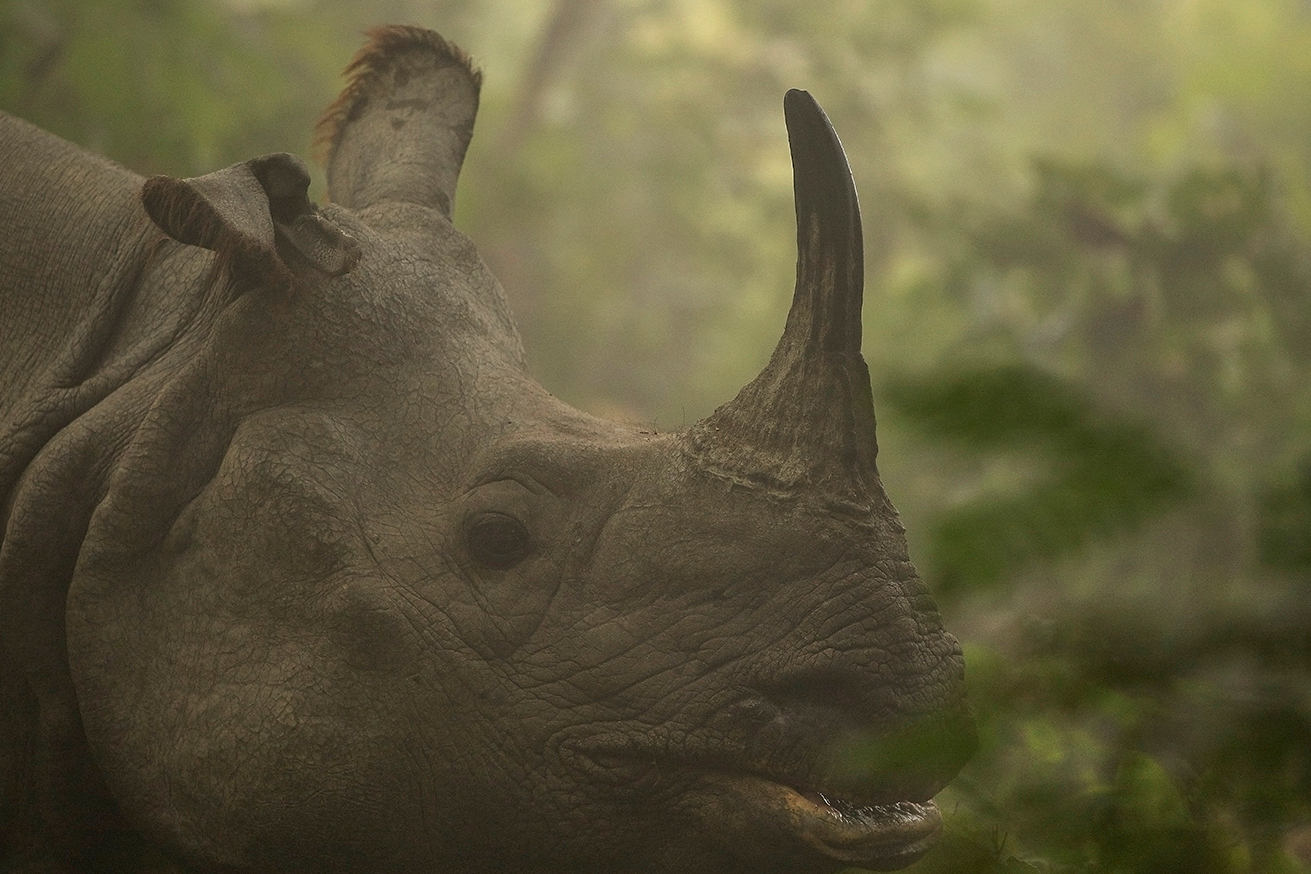After a while some good news has surfaced regarding the population of Rhinoceros in India. It comes from the state of West Bengal – which snuggles beautiful Rhinoceros Unicornis in two National Parks – Jaldapara and Gorumara National Park. Both these parks are housed on the banks of river Torsa. They are two and half drive from each other. It contains more than 200 rhinos. These numbers are only second to numbers in Kaziranga and Poibitra in Assam.
The Rhinos in India are found in only three states – Assam, West Bengal and Uttar Pradesh. The number in Jaldapara and Gormura has reached little above 255. The number is more than the carrying capacity of the both the parks – Forest Minister said in Interview. Hence the need for relocation of few Rhinos.
Out of 3500 Rhinos between India and Nepal – 2500 are home to Indian Subcontinent. Distribution of this species is biggest challenge in India. Majority of Rhinos are in Kaziranga National Park. The concern is rightly raised by Amit Sharma – WWF Senior conservator for Rhinoceros. The Rhino Population is vulnerable to catastrophes like floods or disease outbreaks. He remarks that Rhino population should be given enough space and connectivity to solve the problem of distribution and maintain the healthy quality of Gene pool.
Last year in November – the same concern was raised by IUCN and suggested finding more new sites to absorb these increasing Rhino population. It also pointed out the need of increasing the Gene pool for sites of Jaldapara and Gomura. They also suggested migrating Rhinos from other sites in India.
Meanwhile the proposals have been forwarded to make two new sites – Buxa Tiger Reserve and Cooch Behar – for the conservation of Rhinos in West Bengal State. Plans are also to create one new site for Rhinos in Uttar Pradesh State. Dudhwa National Park houses the two Rhino Enclosure in its heart. The same problem of Genetic diversity haunts Dudhwa National Park as these 35 Rhinos are assumed to be bred out of same male. Thus, in principle one new site would be identified to house this new population of Rhinos.
It is very important that this one horned animal is known and loved by people of India and not restricted to just these three states.
IUCN pointed out the need of increasing the Gene pool for sites of Jaldapara and Gomura. They also suggested migrating Rhinos from other sites in India.
Out of 3500 Rhinos between India and Nepal – 2500 are home to Indian Subcontinent. Distribution of this species is biggest challenge in India. Majority of Rhinos are in Kaziranga National Park. The concern is rightly raised by Amit Sharma – WWF Senior conservator for Rhinoceros. The Rhino Population is vulnerable to catastrophes like floods or disease outbreaks. He remarks that Rhino population should be given enough space and connectivity to solve the problem of distribution and maintain the healthy quality of Gene pool.
Last year in November – the same concern was raised by IUCN and suggested finding more new sites to absorb these increasing Rhino population. It also pointed out the need of increasing the Gene pool for sites of Jaldapara and Gomura. They also suggested migrating Rhinos from other sites in India.
Meanwhile the proposals have been forwarded to make two new sites – Buxa Tiger Reserve and Cooch Behar – for the conservation of Rhinos in West Bengal State. Plans are also to create one new site for Rhinos in Uttar Pradesh State. Dudhwa National Park houses the two Rhino Enclosure in its heart. The same problem of Genetic diversity haunts Dudhwa National Park as these 35 Rhinos are assumed to be bred out of same male. Thus, in principle one new site would be identified to house this new population of Rhinos.
It is very important that this one horned animal is known and loved by people of India and not restricted to just these three states.


